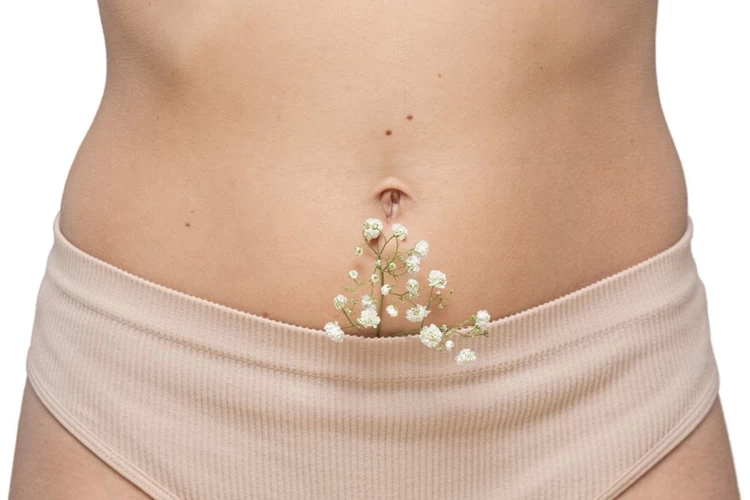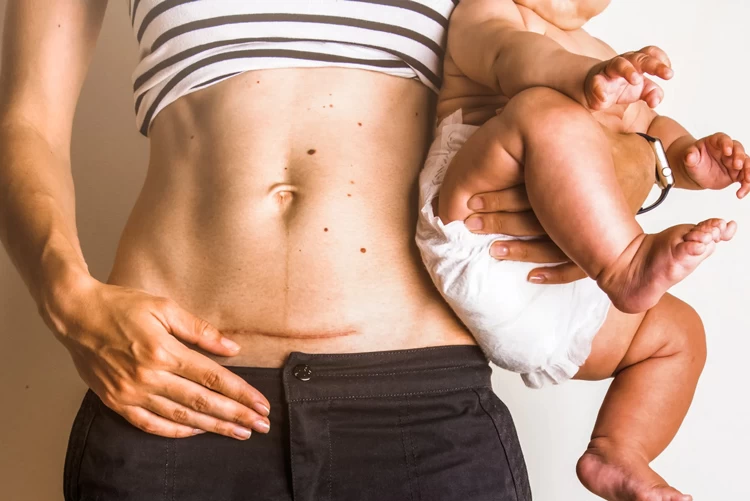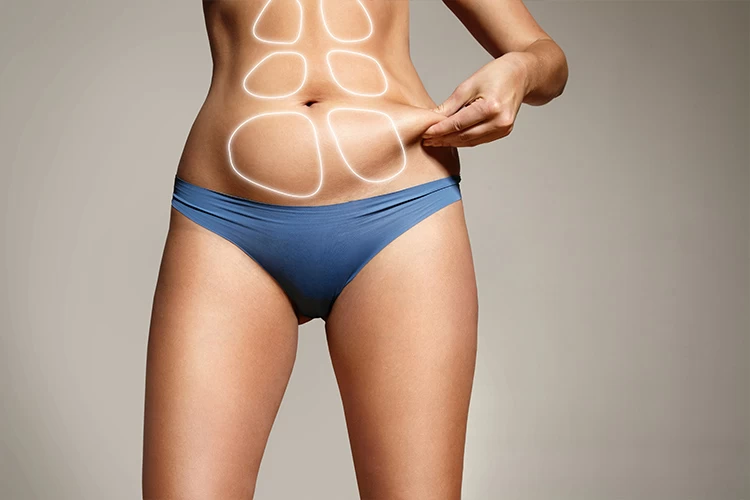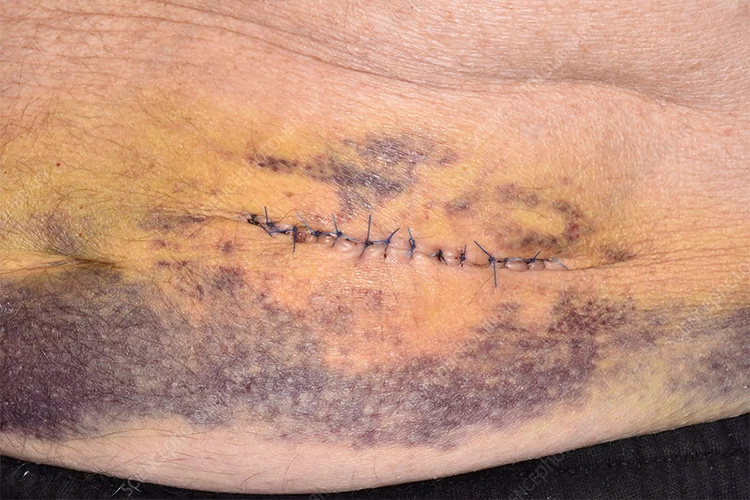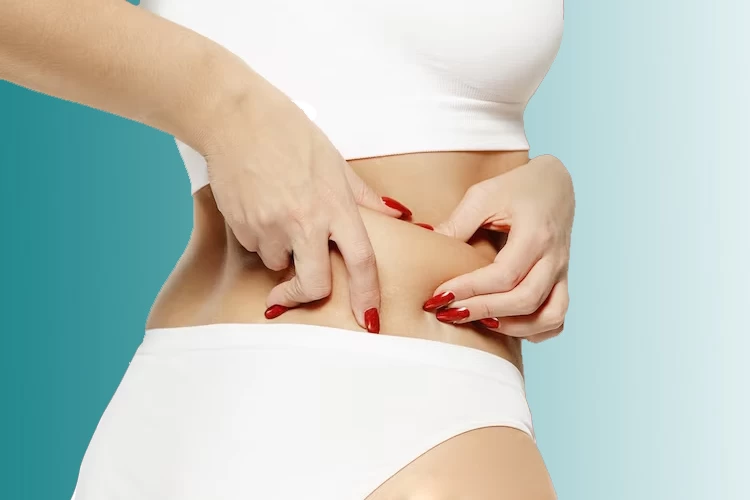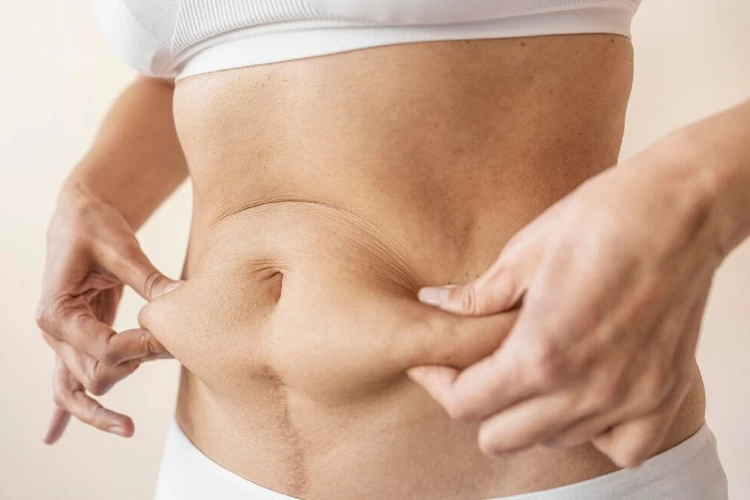Both full and mini tummy tucks aim to shrink the stomach and waistline, but they differ in incision size, operated parts, and the amount of fat and skin they remove. A full tummy tuck is mainly done to repair abdominal muscle, remove a significant amount of skin, and reduce the stretch marks, but it needs large cuts and involves a big scar. On the other hand, Mini tummy tuck offers a smaller incision, but its results are less prominent. If you have a small amount of fat and loose skin, mini abdominoplasty suits you better.
The location and shape of the belly button are changed during the tummy tuck to fit the new stomach’s size. In this operation, the surgeon cuts the abdomen to separate the umbilicus from its surrounding tissue. The belly button is repositioned once the stomach’s muscles are tightened and excess skin is trimmed. It takes 6-12 months for the umbilicus to heal and get a natural appearance. Meanwhile, it would help if you kept the belly button clean, applied antibiotic ointments, and avoided strenuous activities that put pressure on it.
A tummy tuck can bring back your pre-pregnancy body by removing excess skin and stretch marks, tightening the abdominal muscles, and treating Diastasis Recti (separation of abdominal muscles). The best time to get a tummy tuck after a C-section is six months after the delivery, that is when C-section scars have healed, and the body has recovered from pregnancy. Although having a tummy tuck after a C-section is safe, you should take painkillers and antibiotics, keep your wounds clean, and quit smoking to decrease the risk of infection and severe scarring.
You will lose a significant amount of weight after a tummy tuck, but you should maintain a healthy lifestyle, balanced diet, and exercise routine to maintain your new weight. Most people lose 1.5 to 2.5 kg after a mini tummy tuck, 2.5 to 4.5 kg after a full abdominoplasty, and 3 to 5.5 kg after an extended tummy tuck. Adding fruits, vegetables, lean proteins, and whole grains to your diet will also help you maintain a stable weight following this operation.
The extent and location of scars in full and mini tummy tucks differ. Abdominoplasty scars take almost a year to heal and blend into the skin tone. You can reduce this time by applying anti-scar ointments, using silicone sheets, massaging the scars, wearing compression garments, avoiding sunlight, and staying hydrated. You can also prevent scarring by avoiding tobacco products, keeping the skin moisturized, and avoiding heavy physical activities.
After undergoing a tummy tuck procedure, it is common for patients to experience swelling and bruising in the treated area. This is a natural response of the body to the trauma of surgery and should subside within a few weeks. The swelling may be accompanied by discomfort, tightness, and tenderness in the abdomen. Following post-operative care instructions, such as wearing compression garments and taking prescribed medications, is important to help reduce swelling and bruising.
Extended tummy tuck contours your belly, sides, lower back, and buttocks. This procedure is invasive and involves a large cut and scar. The recovery time is 12 weeks, but you can get back to work from week three. As with other plastic surgeries, tummy tuck carries some risks, such as wound infection, bleeding, seroma, scarring, and more.
Iran, Turkey, Thailand, the Czech Republic, India, the USA, and Brazil are the best places to get a tummy tuck surgery. These countries, especially Iran and Turkey, are popular for abdominoplasty as they have low costs, skilled surgeons, advanced hospitals, short waiting lists, and great privacy regulations.
People with high BMIs are more prone to severe complications of abdominoplasty, and their recovery takes longer. Therefore, you should be in a healthy weight range during the surgery. Although obesity increases the risk of blood clots, infection, and delayed wound healing, people with a BMI of 30 or higher can still be a candidate for a tummy tuck.
Liposuction and liposculpture share a lot of similarities; they both contour the body, are done under local anesthesia, and have long-lasting results. However, liposculpture is more precise, and the fat extracted in this operation can be used in other parts of the body, like cheeks, boobs, and buttocks.

